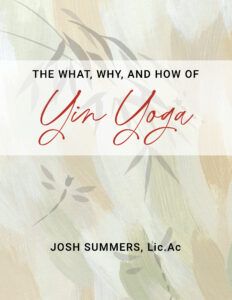I like to think about meditation practice in the same way a musician might think about musical practice.
Just as a good musician works at developing and refining their ability to hear harmonic landscapes, to respond to and sync with rhythmic patterns and grooves, a meditator learns to listen to their experience of being, a process of discerning patterns of sensation, emotion and thought which culminates in a unique process of understanding and expressing their being.
The provisional phrase I’ve used for a while is that meditation is a “contemplative art.” Good art is never about reproducing or replicating someone else’s art. Rather the artist draws from multiple streams of influence (life experience, observation, art works of others, etc), and in working with what has been received the artist collaborates with an internal creative unfolding that gives birth to fresh expression, novel perspective and irreducible beauty.
A few years ago, I fashioned an approach to meditation that I loosely called Yin Meditation. Admittedly, I wrestled with the intrinsic hubris of naming a style of meditation. But I wasn’t aware of an approach to meditation that captured the great variety of contemplative traditions and left room for the creative development of the meditator’s own being. The closest approach I had found – and I need to give full credit where credit is due – was an approach called Recollective Awareness Meditation, developed by Jason Siff. I studied with Jason for a few years, but as much as I was influenced by his approach, I came to feel that there were elements missing from it; and therefore the approach was not fully articulating my understanding and experience of the dharma. Necessity, goes the phrase, is the mother of invention.
In the early days of sharing this receptive and creative approach to meditation, I believed Yin Meditation to be a complete practice. Or another way of saying this is that I felt Yin Meditation transcended and included all other major styles of meditation. But with time, experience and feedback from fellow travelers, I have come to view Yin Meditation as one tool among many contemplative tools – and all of these tools provide unique and complementary ways of seeing into one’s experience and life, facilitating “an onward leading” development of compassion and wisdom.
So how does Yin Meditation fit in with other styles of meditative practice? Just as a musician trains their ear, their sense of time, their technique, their sensitivity in relationship to other musicians, in other words, just as a musician can develop these various musical capacities, I see different meditation approaches as ways of deeping and refining contemplative capacities.
Here is a way I’ve tried to make sense of some of the many broad, overlapping and mutually reinforcing styles of meditation that I’ve practiced. I find Yin Yang terminology to be a helpful way of framing these various approaches:
- Yin Meditation supports the capacity of the meditator to develop a friendly and gentle relationship to the totality of their experience, including their thinking mind. The emphasis here is to safely cultivate a benevolent relationship with all of oneself.
- Yang Meditation begins to develop the spontaneous appreciation of coming to presence – that is recognizing and appreciating the moments when the mind wakes up, on its own, from being absorbed in and defined by thought – momentarily coming to rest in the effortless noticing of sensation as sensation, sound as sound, thought as thought.
- Yang Vipassana (the sort I practiced in Burma) further refines this perceptual clarity of noticing the elemental contents of experience (ie. sounds, sensations, feelings and thoughts)
- Yin Vipassana (the sort I practiced with Thai Forest teachers) shifts the emphasis from focusing on the contents of experience to sensing the field of awareness that knows the various elements of experience.
There are, of course, other levels/lenses/dimensions to practice, but these four cover a lot of the initial territory of the contemplative journey.
Conceptually, these can look like different styles, each with very different “things to do” within them (and I unpack each of these in much greater depth in the four-day Mindfulness Module intensive that I teach, see below), but the simplest way I can express this is that each kind of practice, or each mode of knowing, is really a different facet of what we might encounter when we’re relaxed, receptive and curious about the nature of our experience. And even though these are listed in a “progressive” order, and although they could be developed individually, they could also simply serve as conceptual landmarks for the skillful navigation, understanding and creative development of one’s own practice. From the analogy of music: a musician will often allocate blocks of practice time for ear training, rhythmic skill, scales and arpeggios, tonal development, etc… but in actual performance all of these capacities meld together within the artistic flow. So, too, with meditative styles.
At the end of the day, your meditation is always your meditation.
With relaxed receptivity as the common denominator to these various approaches, I ultimately merge them together as a cohesive creative Path of Receptivity, or Tao of Yin.
“The Tao does nothing, and yet nothing is left undone.” – Lao Tzu
Practice and Training Opportunities:
- Weekly Classes with Josh and Terry (Yin Yoga, Yin Meditation, Yin Qi Gong, Yang Qi Gong)


